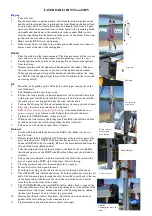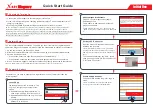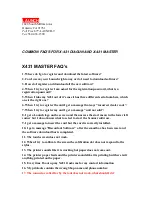
EN – 40
Clinical application
4.1
Indications/Contraindications
The PABLO®
system is mainly used in neurologic rehabilitation of the distal upper
extremity. The target population includes not only neurologic but also orthopedic and
pediatric patients with deficits in movement control, force application, force control,
aiming accuracy, coordination, trunk control and balance. Upper extremity, lower
extremity and trunk application is possible. As in the case of every other therapy, the
doctor in charge is responsible to make medical diagnosis and decide for the type of
intervention. In principle, the same indications and contraindications apply for PABLO®
therapy as those for manually applied therapeutic treatment. Knowledge of the
contraindications is essential in order not to put the patient at risk. Before applying
PABLO®
therapy to a patient, check carefully if one or more contraindications exist. Also,
be aware that your patient may have additional indications and/or contraindications that
have not been listed here but may be relevant. The following listings have no claim to
completeness.
Common Indications:
Stroke (cerebral hemorrhages, ischemic damages)
Traumatic brain injury (TBI)
Spinal cord injury (SCI)
Brain tumor
Parkinson’s disease
Chronic diseases, e.g. multiple sclerosis (MS)
Cerebral palsy (CP)
Motor neuron diseases, e.g. amyotrophic lateral sclerosis (ALS)
Muscular dystrophies
Paralysis due to a herniated vertebral disc
Orthopedic events such as post traumatic hand surgery sequelae
Absolute Contraindications:
The device must not be used!
Acute pain despite conventional pain therapy
Adjustment and patient position: Do not carry out training with the PABLO®
system if the adjustment to the patient’s individually physiologic position is not
possible, especially in case of contractures or severe spasticity (joint is
fixed/rigid) of the trained body region
Insufficient compliance, e.g. children, patients suffering from severe psychotic
diseases or severe
High grade ataxia











































